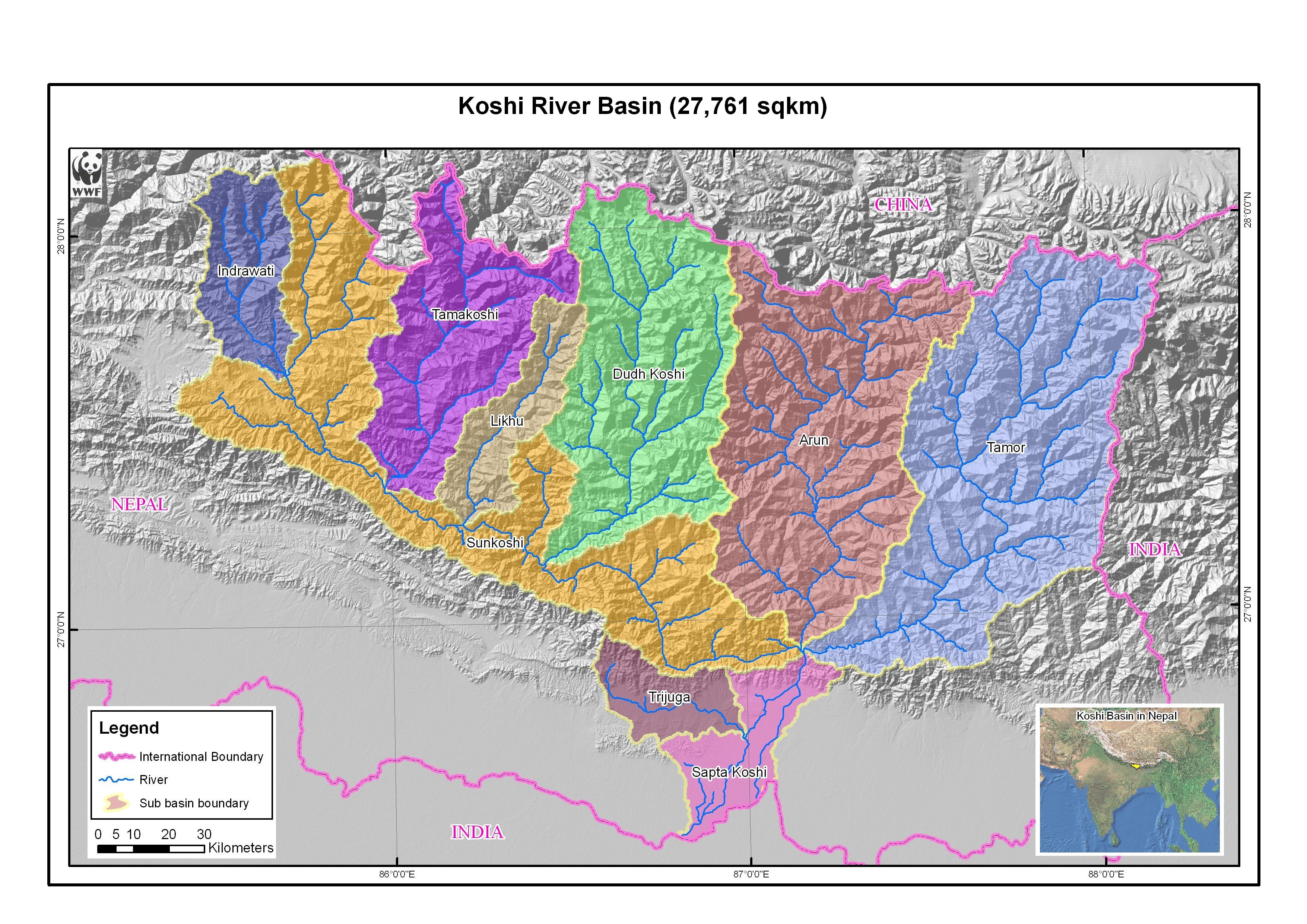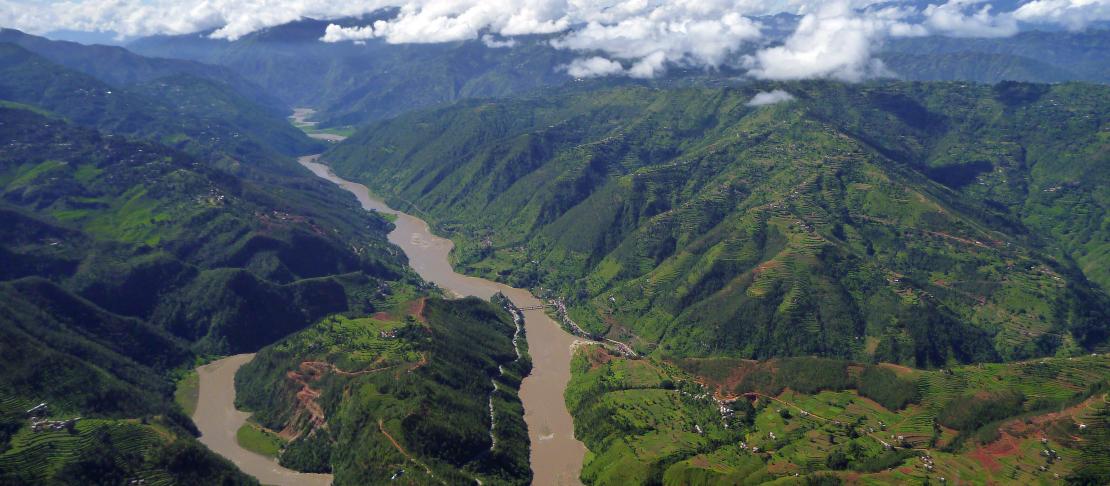
The Koshi River, also known as Saptakoshi River, originates in Tibet and flows through Nepal and India. The Koshi River is one of the largest tributaries of the Ganges River. The catchment area of the Koshi River up to its confluence with the Ganges River is 87,311 km2, of which 28,300 km2 lies in China, 39,407 km2 in Nepal and 19,604 km2 in India.It has seven tributaries i.e. Sun Koshi, Tama Koshi, Dudh Koshi, Indrawati, Liknu, Arun and Tamur. The Koshi River Basin is one of the most vulnerable regions of Nepal and is highly prone to erosion, sedimentation, and natural hazards affecting people in China, India, and Nepal. The Koshi River system is known to be rich in fish species diversity. The Ramsar-protected Koshi Tappu wildlife reserve is probably the richest fish ecosystem of Nepal in terms of fish species abundance and number of fishers dependent on fishing for livelihood, This basin is important for most downstream areas in the irrigation systems and has a large potential for hydropower development. The Koshi barrage constructed after the Koshi Agreement signed between the Government of Nepal and India is the major reason for heavy floods in several areas of the Terai region.
PC: Mark Kelly (Flicker)
